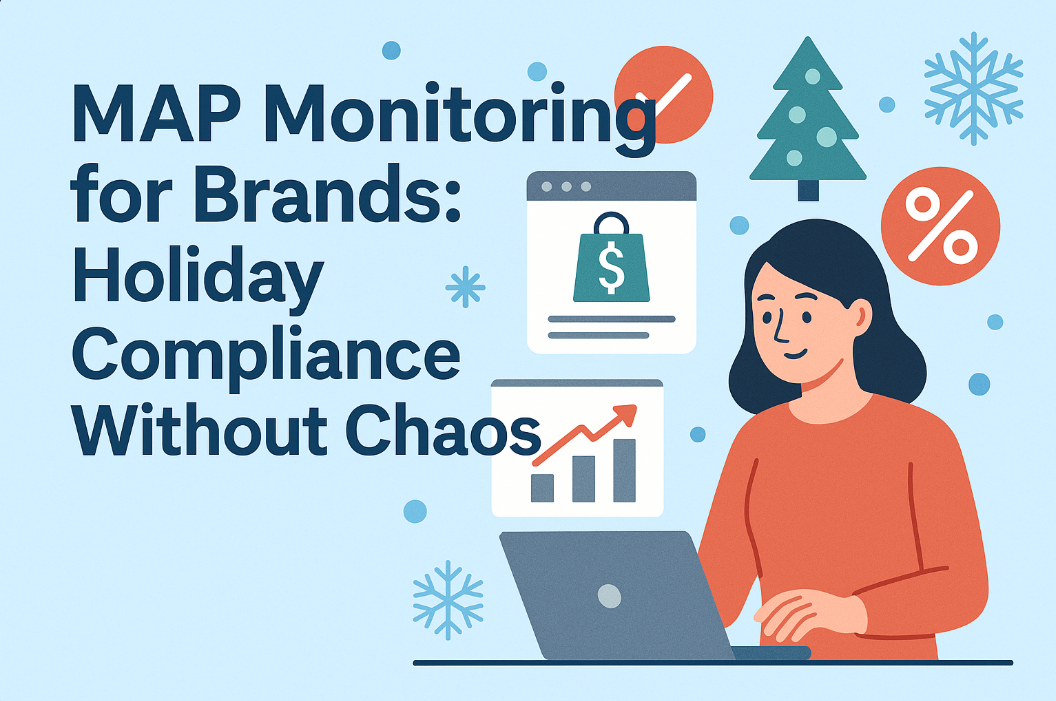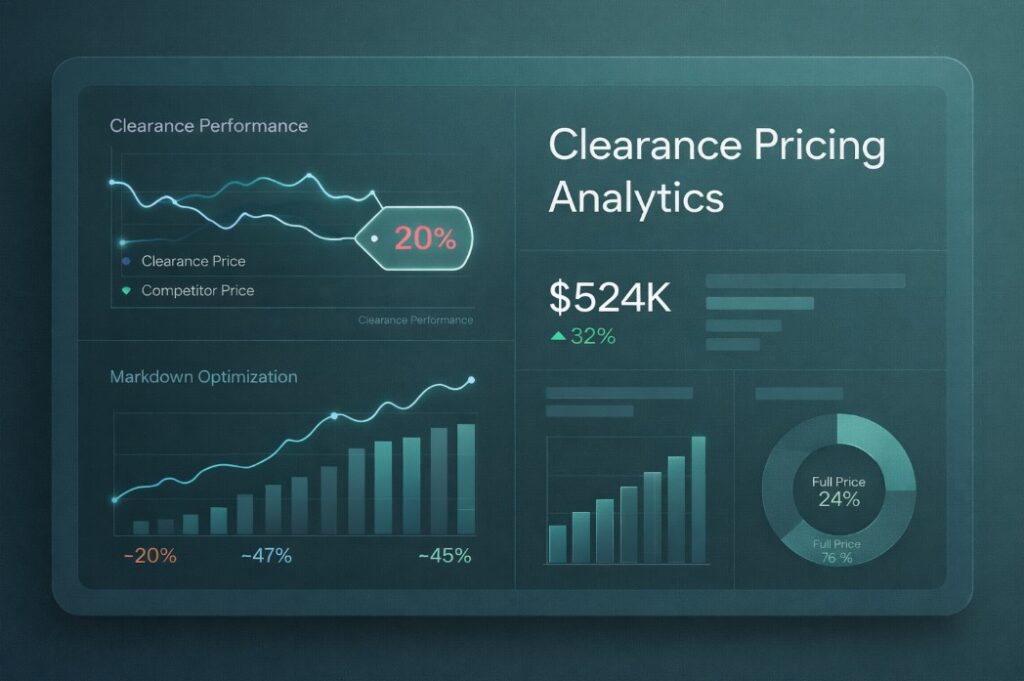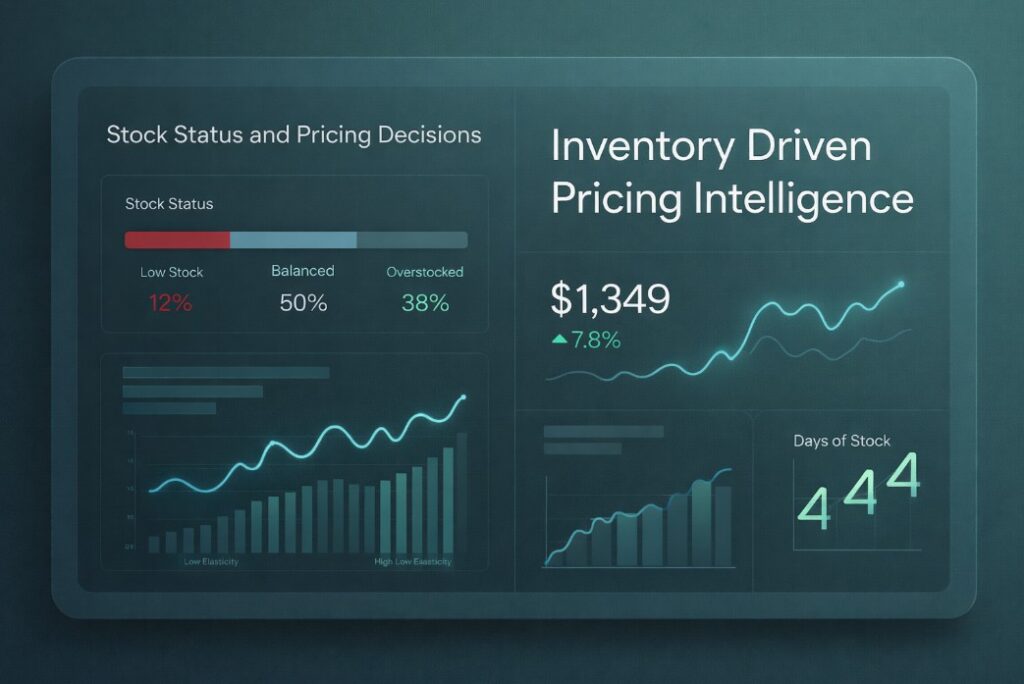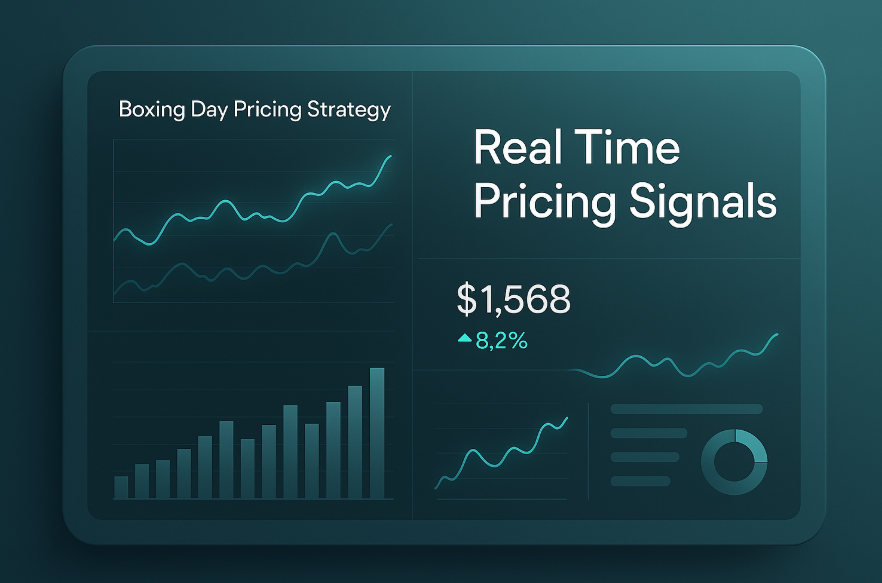- Product
- Solution for
For Your Industry
- Plans & Pricing
- Company
- Resources
For Your Industry
The holiday season represents both opportunity and risk for brands. It is a time when Minimum Advertised Price (MAP) monitoring becomes mission-critical. With online traffic spiking, retailers racing to attract customers, and marketplaces running endless flash sales, price consistency can quickly unravel without structured oversight. When MAP policies are violated, the consequences go beyond a few lost dollars—they can erode brand value, spark retailer disputes, and confuse customers.
In this guide, we explore how brands can maintain MAP compliance during the holidays without chaos. From automation tools to partner communication strategies, we’ll break down data-driven best practices that ensure brand integrity through one of the busiest shopping periods of the year.

Holiday seasons can drive up to 40% of annual retail revenue, making them critical for both profit and perception. However, the same rush that brings opportunity also amplifies risk. Retailers under pressure to hit sales targets often resort to unauthorized discounts. If these promotions undercut MAP pricing, brands face the double blow of lost margins and weakened consumer trust.
Aggressive promotions: Flash sales, bundled offers, and coupon stacking often lead to unintentional MAP breaches.
Marketplace volatility: On platforms like Amazon or eBay, third-party sellers can update prices hourly, leaving brands chasing violations.
Inconsistent price synchronization: Different eCommerce platforms may delay price updates, causing temporary noncompliance.
Global complexity: Brands with cross-border presence must handle region-specific MAP policies and time zone challenges.
MAP monitoring for brands, therefore, is not only a compliance function. It is a brand protection mechanism that preserves long-term equity during the most competitive period of the year.
A single MAP violation might seem minor, but during holiday shopping peaks, even small lapses can trigger a chain reaction.
Unauthorized price drops create immediate financial loss, particularly when resellers match or undercut competitors’ prices.
Consumers perceive value through price. When the same product is seen at inconsistent prices across channels, it weakens perceived exclusivity and trust.
Authorized retailers following MAP policies feel penalized when others violate them. This can lead to strained relationships and lost shelf space.
MAP violations on marketplaces often force other retailers to drop prices automatically through algorithmic price matching.
Ignoring MAP enforcement during holidays is therefore not a short-term oversight—it’s a long-term strategic risk.
Manual MAP monitoring is not sustainable in an omnichannel retail environment, especially during the holidays. Automated systems detect and report violations in real time, providing a scalable solution for complex pricing ecosystems.
Real-time tracking: Monitor thousands of SKUs across marketplaces 24/7.
Automated alerts: Receive instant notifications for MAP breaches via email or integrated dashboards.
Trend visualization: Detect repeat violators or high-risk product categories.
Batch reporting: Generate compliance reports for internal reviews and legal documentation.
Platforms like tgndata combine machine learning with web scraping and dynamic analytics to identify pricing anomalies within minutes. This allows pricing and compliance teams to act before violations impact the market.
A consumer electronics brand running a holiday campaign detects 300+ listings violating MAP on Cyber Monday. Using tgndata’s automated workflows, violations are flagged, sellers are notified, and 85% of listings are corrected within 24 hours. Manual detection would have taken days, during which price parity would collapse.
MAP monitoring is not only about catching violations—it’s about learning from them. The data collected through MAP analytics reveals insights into channel dynamics, retailer behavior, and consumer pricing sensitivity.
| Insight Type | Description | Business Application |
|---|---|---|
| Violation Frequency | How often specific retailers break MAP | Identify chronic offenders for contract review |
| Violation Duration | Average time listings remain below MAP | Assess enforcement responsiveness |
| Channel Comparison | Compare Amazon vs. Walmart vs. independent stores | Adjust promotional guidelines per channel |
| Pricing Elasticity | Correlate MAP violations with conversion rates | Optimize promotional timing and depth |
When integrated into business intelligence platforms, these insights fuel strategic decision-making that goes far beyond compliance.
Machine learning models can now forecast which SKUs are likely to be violated based on historical trends. For example, products with high review counts and price elasticity are often the first to be discounted illegally. Using predictive alerts, brands can intervene before the issue surfaces.
Enforcing MAP compliance during holidays requires diplomacy. Retailers under immense promotional pressure may view enforcement as restrictive. The key is proactive communication, not punitive action.
Pre-Holiday Workshops: Conduct short webinars with retail partners to review MAP terms and share best practices.
Automated Transparency: Provide retailers access to shared compliance dashboards that show current status and recent updates.
Positive Reinforcement: Reward compliant sellers with co-marketing funds or enhanced visibility in brand directories.
Structured Violation Handling: Replace generic warning emails with clear data-backed violation reports including screenshots and timestamps.
Step 1: Automated system detects violation.
Step 2: Notification sent to retailer with evidence and resolution window.
Step 3: If unresolved, escalation triggers to brand account manager.
Step 4: Persistent offenders flagged for policy review.
This structured yet collaborative approach fosters accountability without friction.
MAP monitoring and dynamic pricing are often viewed as opposing forces, but they can coexist effectively when synchronized through technology.
A connected system ensures that pricing automation tools respect MAP thresholds. Dynamic pricing can adjust to competition while never crossing compliance limits.
Real-time MAP safeguard: Ensures automated price changes stay within approved boundaries.
Cross-functional intelligence: Pricing, marketing, and compliance teams operate from the same dataset.
Adaptive strategy: Brands can offer legitimate promotions while maintaining price consistency.
A fashion brand integrates tgndata’s MAP API with its dynamic pricing engine. When competitor prices drop, the algorithm recalibrates retail prices but never falls below MAP. The result is competitive agility with zero compliance risk—a win-win for both profitability and policy adherence.
Review MAP policy language: Ensure clarity on promotional exclusions and bundle pricing.
Identify high-risk categories: Electronics, toys, and beauty products often face the highest violation rates.
Run pre-season audits: Detect existing violations before major campaigns launch.
Simulate alerts: Test your MAP monitoring systems before Black Friday to ensure readiness.
Train internal teams: Ensure pricing, legal, and sales departments align on escalation workflows.
Monitor violations hourly for top-performing SKUs.
Cross-check promotions for authorized price exceptions.
Engage retailers quickly to correct unauthorized discounts.
Use data dashboards to visualize compliance rates in real time.
After the season ends, review all MAP incidents, identify root causes, and adjust next year’s compliance strategies accordingly.
Success in MAP monitoring is measurable. Brands should adopt a KPI-driven framework to assess performance and ROI.
| KPI | Description | Target Benchmark |
| Violation Rate | % of listings below MAP | < 3% during peak season |
| Average Detection Time | Time from violation occurrence to detection | < 60 minutes |
| Retailer Response Time | Avg. time to acknowledge violation | < 6 hours |
| Resolution Rate | % of corrected violations | > 90% |
| Compliance Trend | Year-over-year improvement | +15% |
| Partner Satisfaction | Feedback from authorized sellers | 8/10 or higher |
By monitoring these KPIs, brands can demonstrate measurable improvement and justify investments in MAP automation platforms like tgndata.
The next generation of MAP compliance is driven by artificial intelligence. AI models can automatically predict and prevent violations by analyzing seller behavior, competitor activity, and seasonal triggers.
Predictive Violation Modeling: Anticipate which SKUs or sellers will likely break MAP next.
Sentiment Analysis: Scan reviews and social media for early signals of unauthorized sellers.
Automated Enforcement Bots: Generate structured violation notices with evidence and recommended actions.
Visual Recognition: Detect screenshots or images of MAP-violating ads across digital media.
By embracing AI, brands can transition from reactive enforcement to predictive prevention, ensuring holiday compliance with minimal manual effort.
MAP monitoring for brands is not just about catching violators—it is about protecting brand equity, ensuring consistent customer experiences, and maintaining partner trust. The holiday season may magnify risks, but with the right tools, automation, and strategy, compliance becomes an organized, data-driven process.
tgndata’s MAP monitoring platform empowers brands to:
Detect MAP violations in real time.
Integrate dynamic pricing and compliance seamlessly.
Use analytics to turn compliance data into market intelligence.
Build stronger, transparent relationships with retail partners.
The holidays should be about opportunity, not disorder. With tgndata, brands achieve holiday compliance without chaos and enter the new year with stronger control, higher margins, and sustainable retail harmony.













Missing an important marketplace?
Send us your request to add it!